
From Research to Adventure: Exploring Uganda with Dr. Owen Slater, B.Sc. '00, DVM '06
By Dr. Owen Slater
U of G is partnering with Worldwide Quest to offer special alumni-focused trips led by the University of Guelph community. In the fall, U of G alumnus Owen Slater, B.Sc. ’00, DVM ’06, will be leading an alumni trip to Uganda.
Owen first visited Uganda in 2001 on a solo backpacking journey through East Africa, where he volunteered with the Jane Goodall Institute in Entebbe, caring for an injured chimpanzee and trekking to see the mountain gorillas in Bwindi National Park. Captivated by Uganda's incredible biodiversity, Owen has returned many times. As a wildlife veterinarian, he has conducted research on mountain gorillas in partnership with Gorilla Doctors and Makerere University. He has also trained wildlife professionals in great ape veterinary care at workshops in Kampala. Owen has explored Uganda extensively, immersing himself in its natural wonders.
Uganda has some of the most spectacular wildlife and scenery in East Africa. To take you on a journey through the beauty of Uganda, I’ve gathered some images from my past travels that capture the essence of this incredible country.
Gliding along by boat down the mighty Nile River in Murchison Falls National Park, one is immersed in a world teeming with wildlife, from majestic mammals to stunning birds.
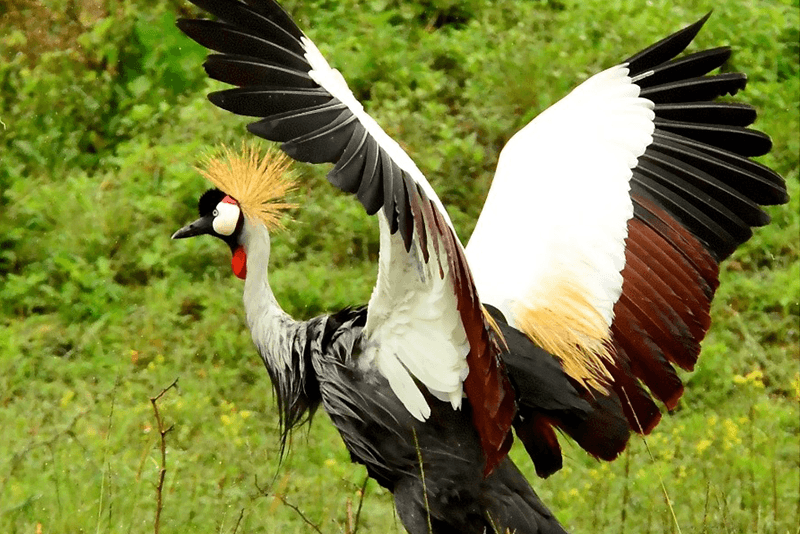
One of my favourites is the Gray Crowned-Crane, which is the national bird of Uganda and featured prominently on the Ugandan national flag, coat of arms, and currency. If their good looks are not enough to captivate your attention, these birds inflate the red gular sac below their beak to create distinctive, booming calls, and both sexes perform elaborate dances not just during courtship, but also throughout the year.
Much smaller, but equally as impressive are the Red-throated Bee-eaters. As their name suggests, these birds have figured out how to safely catch and eat stinging bees. After catching their prey, they smack it against a hard surface to dislodge the stinger prior to consuming their meal. As colony nesters, they are often seen in large groups neighbouring the Nile.
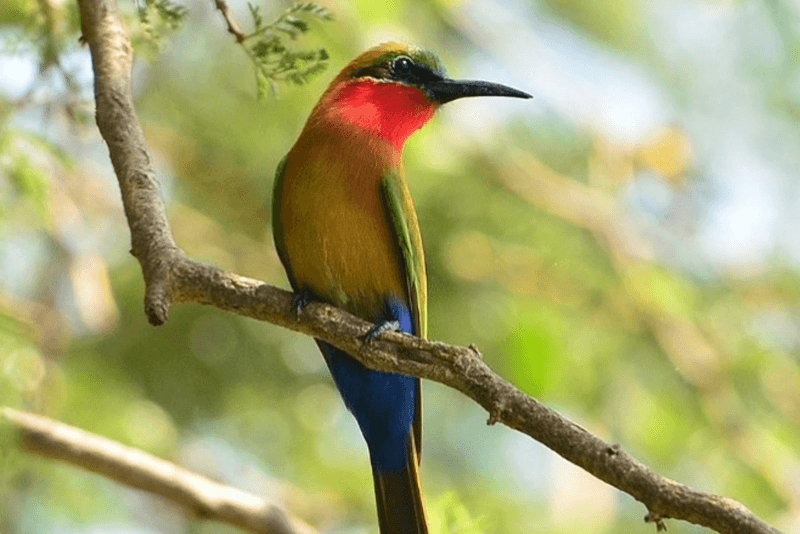
Along the way, it is not uncommon to find multiple species along the banks, including sunning crocodiles, Waterbucks, and warthogs, just to name a few of the animals we are likely to encounter.
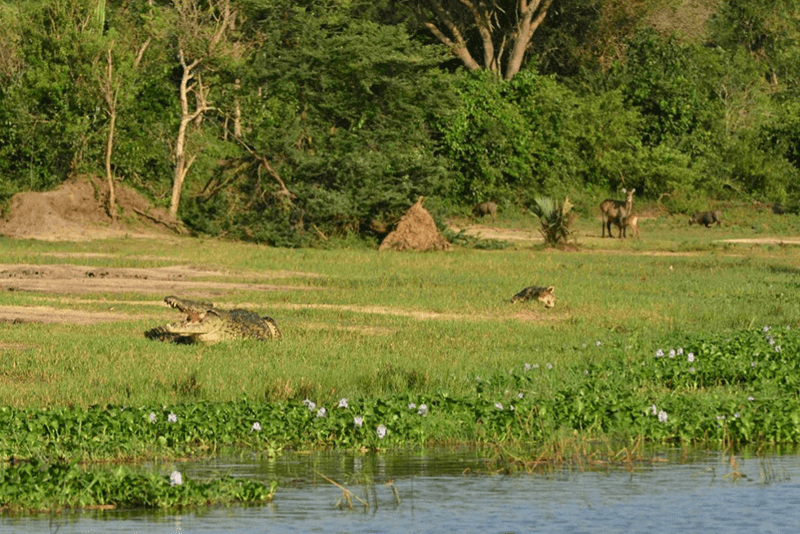
Journeying south to Queen Elizabeth National Park, the landscape transforms into a breathtaking mix of wildlife and unique vegetation. Herds of African elephants roam the terrain, moving gracefully among towering trees and open plains.
In this photo, elephants are browsing around the appropriately named Euphorbia candelabrum tree. The candelabra is best appreciated from a distance, as this succulent releases a milky sap when the branches are damaged by baboons and other animals, which can cause skin irritation and other health issues for people.
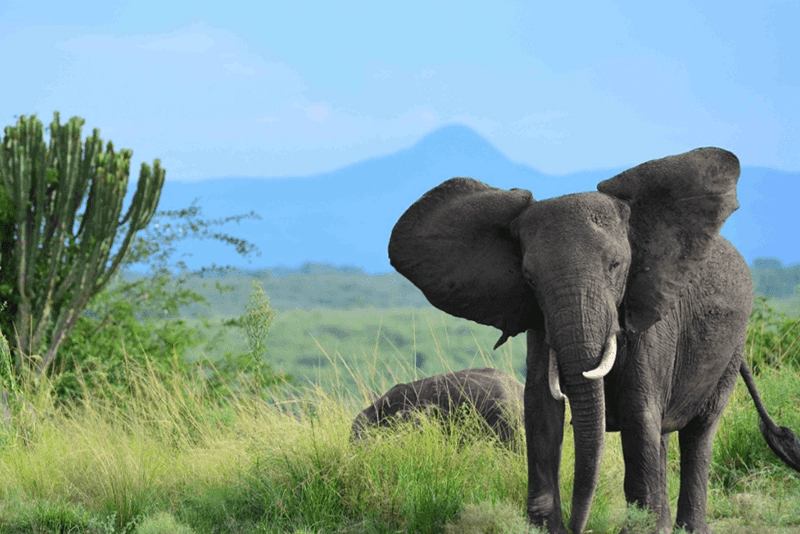
The park is also home to the Ugandan Kob and set on a stunning landscape with the Rwenzori mountains in the distance. This specific antelope also appears on the coat-of-arms, which illustrates just how much the Ugandan people appreciate their native wildlife.
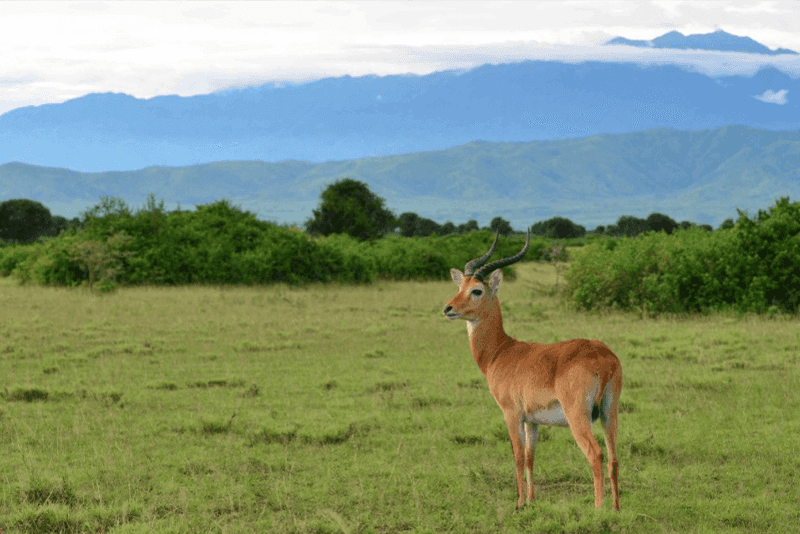
In Uganda’s protected national parks, it’s not uncommon to spot hippos basking along the shore, partially submerged in the water or lounging on the riverbanks.
This glimpse into Uganda’s incredible biodiversity is just the beginning. From vast savannas to lush rainforests, the country is home to an astonishing array of wildlife, including the great apes of western Uganda—an area I’ll be exploring in depth on a tour later this year. Each landscape holds its own wonders, inviting exploration, discovery, and awe.
Whether through the eyes of a traveler or the lens of conservation, Uganda offers an unforgettable journey into the heart of nature.
You can explore the magic that Uganda has to offer on our Great Apes and Wildlife of Uganda tour being led by U of G’s own Dr. Owen Slater, B.Sc. '00, DVM ’06 in December 2025. Visit our Alumni Travel Program to learn more about this once in a lifetime adventure.